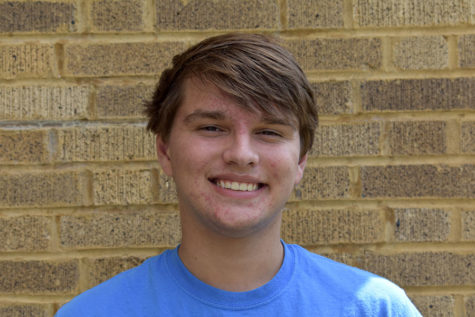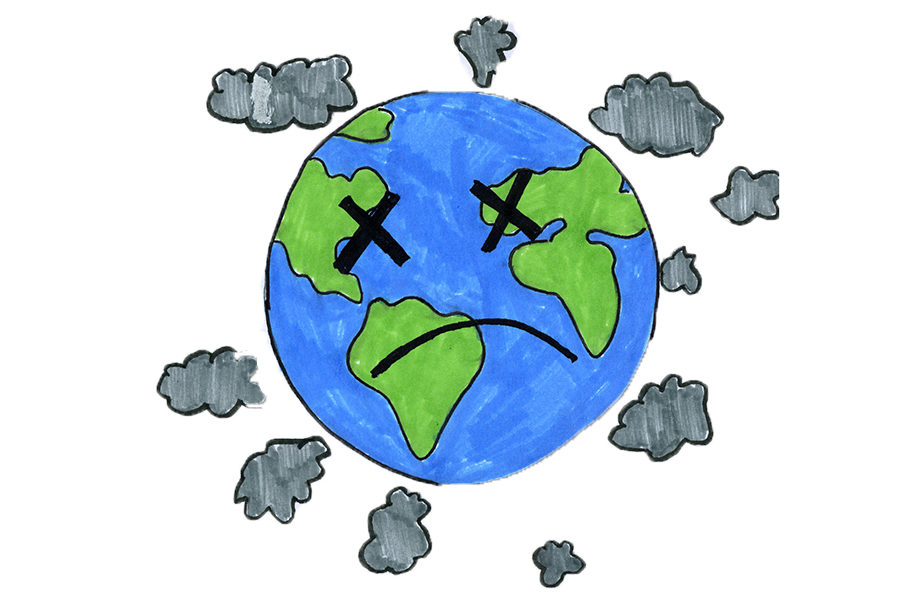People Can Save the Environment
Better Decision-Making Leads to Healthier World
“When will our country stop wasting money on global warming and so many other truly ‘STUPID’ things and begin to focus on lower taxes?” 2014 Donald Trump Tweet
It would appear that today’s lawmakers are unphased by the state of the environment across the globe whether it’s the melting ice caps or the rapidly growing deserts. Closer to home, however, pollution of ecosystems with plastic is a rapidly growing crisis. According to a study by the University of California Santa Barbara, 12.7 million metric tons of plastic material end up in the oceans every year and this number is rapidly growing. It may seem like the fate of our planet depends on politicians on Capitol Hill to make regulations to save the Earth, but actually we can all help to have less of an impact by giving up some everyday items that are doing major harm to the environment.
Plastic straws create unnecessary waste
Single-use plastic straws aren’t biodegradable and they take many years to break down. Most people use straws for only about 20 mins before they throw them away, never to use them again. Straws have BPA, which means they can’t be recycled. Not only that, but the worldwide amount of plastic waste has risen to 6.3 billion metric tons, out of a total of 8.3 billion metric tons of plastic produced. (nationalgeographic.com) That is a 9 percent recycle rate. Recently a video of a sea turtle with a plastic straw stuck in its nose surfaced; this motivated a large group of people to begin to refuse the use of plastic straws. That struck a chord for many, and has sparked a new trend that may be good for the environment. At restaurants, many have asked to not be given plastic straws or have not used straws given to them.
The long list of healthy alternatives to plastic straws includes bamboo straws, paper straws, metallic straws, and reusable acrylic straws. All of these choices benefit the environment and reduce the large waste amounts of plastic that the world contains.
Plastic pollution poisons planet
Plastics in the form of straws can cause great harm to the environment. Still, other plastics can cause harm, and the world is currently producing more plastic ware than ever before. According to a new report conducted by the scientists of The Royal Society, the amount of plastic manufactured from 2000-2010 eclipses the entire output of plastic in the 20th century.
Plastic has become so widespread because of how inexpensive and easily produced it is, but production has been detrimental to not only our environment but the human race itself. Plastic is known to suck up toxins such as persistent organic pollutants and polycyclic biphenyls. Some plastics have these added chemicals, which are absorbed by humans, and the effects of the chemicals may sometimes alter hormones or lead to other health problems. Along with that, plant and animal life is at risk because of the chemicals that plastics contain, as marine animals often ingest plastic debris.
The best way to solve this problem is to avoid the use of plastics as often as possible. It is best to be aware of the effects that using plastics entails and to consider that when making decisions about the use of it. Small ways to help are by doing things such as bringing your shopping bag to the grocery store, or using a reusable water bottle rather than plastic water bottles, or by using things such as reusable food wrapping. All of these small steps can help prevent the waste of plastic and help reduce pollution.
Cars create carbon catastrophe
Most of us know that transportation, mainly in the form of cars, can be detrimental to our environment, but not everybody knows about the external costs that come with mass transportation. A direct impact of transportation on the environment is the emission of carbon monoxide. Not only can inhalation of carbon monoxide by humans be fatal, but it also threatens the ozone layer. When carbon monoxide reacts with air pollutants it produces a harmful low-level ozone. In addition, incomplete combustion within an internal combustion engine that is used in many forms of transportation can indirectly lead to respiratory and cardiovascular issues for humans.
Another indirect outcome is an increased amount of pollution that contributes to the ongoing trend of global climate change. 15 percent of global carbon dioxide emissions are attributed to the transport sector. In a recent study that compared CO2 emissions from cars and other modes of transportation, the only mode of transportation that emitted more carbon dioxide on average than a one person car was a ferry boat, and all other modes of transportation produced less emissions.
Alternatives to driving a one person car are things such as carpooling, biking or walking, grabbing a taxi, Lyft, or Uber, as well as riding the train, subway, or bus. The best thing people can do to help our environment in the transportation sense is to buy only as many cars as they need and to use them only when they need to. If humans can abide by that, it’s likely that we can begin to reduce our carbon emissions in transportation, even if only by a small amount.
Face wash harms marine life
An unexpected problem that’s haunting our bodies of water is face wash, specifically types containing plastic microbeads. These microbeads are very small (around 1mm in diameter) and cannot be filtered through water treatment systems because of their size. These polyethylene plastic bits end up in rivers and lakes where they remain, resistant to degrading. They bioaccumulate and combine with toxins which are consumed by plankton at the bottom of the food chain and eventually cause harmful effects throughout the food chain, even affecting fish that humans consume.
If you have a face scrub that uses these plastic microbeads, there are many healthy alternatives you can implement. For oily skin, try Bioré Charcoal Acne Scrub ($6 on Amazon). For dry skin, try Aveeno Skin Brightening Daily Scrub ($8 from Ulta). For sensitive skin, use Cetaphil Daily Face Cleanser ($6 at Target).
Smoking haze chokes ecosystem, contributes to mass pollution
Most people are aware that cigarettes are extremely harmful to the body’s health, but some may be surprised that cigarettes have detrimental effects on the environment. Cigarettes are the most littered item on earth and are non-biodegradable, meaning they never are able to break down. A burned cigarette contains 7000 chemicals. When cigarettes are thrown away, these toxic chemicals leach into the ground and poison water sources. According to thetruth.com, the air pollution from second hand smoke is 10 times more harmful for the environment than diesel cars.
The burning of the cigarettes is only a part of the harm that is being done. Production of cigarettes is a dirty process. Thetruth.com claims that 1,685,068 pounds of toxic chemicals were released by tobacco production facilities in the US in 2012. Additionally 600 million trees are chopped down every year for tobacco production companies.
If your older siblings or family members are smokers, have a serious chat with them. Explain that cigarettes do major harm to them and the environment and let them know that the people around them can be seriously harmed by second-hand smoke (41,000 non-smoking adults die every year from second-hand smoke) and encourage them to seek help if they have an addiction.
Blue jeans use record water amounts.
Another unexpected harm to the environment is blue jeans. To create just one pair of denim blue jeans, 2000 gallons of water are used for cotton growth and production(vice.com). According to the International Solid Waste Association (ISWA), the total energy consumption of preparing soil, harvesting cotton, and transportation to factories is 60 megajoules/kg which exceeds that of natural gas. The other processes involved in production of jeans including the dying and weaving of fabric require large amounts of energy and the toxic dye fumes are exposed to the air, causing air pollution. To reduce environmental impact, try wearing leggings, khaki pants, or even jeggings, which are leggings designed to resemble denim jeans but with much less environmental impact.
Veganism/Vegetarianism reduces environmental impact
You probably just groaned as you read this subhead. Bear with us. The bad news is that factory farms raise 99 percent of most meat in the United States including chickens, turkeys, pigs, and cows (huffingtonpost.com) and factory farms are having a bigger impact on the planet than absolutely anything else. Yes you read that right. Factory farming perpetuates every single type of pollution, including air and water pollution, deforestation, and carbon emissions and fossil fuel usage. According to onegreenplanet.org, 37 percent of methane emission in the US are a result of factory farming. Methane has a global warming potential that is 20 times higher than carbon dioxide.
Two-hundred sixty million acres of forest have been cleared to be converted to monoculture crop lands, which erode the land and require synthetic fertilizer and pesticides, which destroy disrupt the surrounding ecosystem and waterways. Overall, factory farms have a more dangerous impact on the environment than cars. Even if you can’t commit to becoming fully vegan, vegetarianism will help reduce environmental impact as well.









Shaina khan • Jan 10, 2019 at 1:06 pm
This article is very detailed and it helps raise awareness.